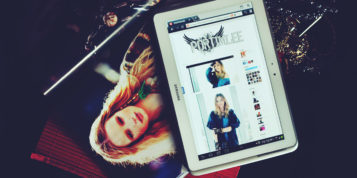A brand’s greatest asset is its customers. Costly to acquire and challenging to retain, loyal customers are also powerful ambassadors who can help their peers discover new brands and ultimately become customers themselves. Whilst this may be marketing 101, many brands are still failing to truly tap into the benefits of word-of-mouth. This is particularly true when it comes to user generated content (UGC).
In today’s image and social media driven world, where consumers are capturing and sharing snippets from their lives every day, the opportunities to leverage UGC in marketing are vast. From Instagram to YouTube, happy shoppers are eager to share their experiences with a product, which can have a huge impact on driving others to purchase.
A brand will spend significant budget on generating appealing and eye-catching imagery, but our recent study indicates that almost one third of consumers actually prefer to see UGC over professional shots. Despite the role it can play in engaging more consumers, just 16% of retail brands leverage UGC in their email and web marketing. This ultimately means they are missing out on effective ways to increase sales.
With that in mind, we’ve outlined why UGC should be considered a secret weapon to aid the brand’s marketing efforts with engaging free content.
Giving consumers confidence to purchase
While physical stores provide the opportunity for human interactions, online has always faced a challenge trying to re-create this. Whilst tech innovations, such as chat bots, VR and AR, can help improve the online experience, UGC can add this human element to your digital marketing at minimal cost and effort.
No matter how they are shopping, consumers are looking for reassurance when they buy. Incorporating content such as product photos and reviews from other customers not only helps drive this, but also builds trust in the brand.
Homepages and product pages are the obvious choice for UGC to catch the eye of a browser, but there are many other use cases to increase conversions. Basket recovery emails can be an effective way to re-engage customers by sharing what other customers love about the carted products. Showcasing customer imagery in the marketing newsletter keeps emails fresh without the need for expensive photoshoots.
Creating a sense of community
As with all marketing efforts, remaining mindful of the target audience will be critical to the effectiveness. Leveraging content from customers should be in-keeping with the broader brand, but also suit the demographic. UGC works particularly well for younger audiences, with 41% of Millennials saying that they find product photos from other customers useful when shopping, stating that they make them more likely to consider the purchase.
Displaying UGC in your digital marketing is an effective way to increase excitement about your products, but there are many more options to use it in a creative and engaging way. Uniqlo chose a fun approach, recently launching a competition for consumers to upload videos of themselves wearing the new clothing range. The collaboration with Tiktok could see consumers in with a chance of having their video appear on digital screens throughout stores globally. Not only does this drive a deeper engagement with the brand, but it’s an innovative way to create a sense of community amongst the customer base.
Cutting return rates
There’s certainly a case for UGC encouraging people to purchase, but this isn’t the only role the social proof tactic can play. As has been widely reported in the media recently, brands are facing a rise of serial returners. For the online fashion sector in particular, consumers have increasingly been found to bulk order items before returning a significant proportion.
Data suggests that online returns in the UK will hit a total of 5.6 billion pounds by 2023, which could have a huge impact on a brand’s profits. ASOS has announced changes to its returns policy in a bid to tackle this, and claims it will take action if a serial returner is treating the ASOS proposition as a rental service.
Before making return policy changes though, retail brands should look at how UGC can help reduce the purchase of items that end up being returned. Through leveraging more imagery from customers, brands can give a clearer view of what a product looks like in real life. For items such as apparel, footwear and jewellery, this is particularly useful, as it will bring styles, textures and fit to life, meaning customers will have a better understanding of the item they are buying.
Not only is UGC a tactic that consumers trust, value and engage with, compared with influencer marketing it’s an incredibly cost effective and scalable way to drive sales. Loyal customers are critical to driving a sense of excitement and community within a brand – and UGC can be a great way to grow this. As our data indicates, it’s a tactic that still offers lots of untapped potential, but the rewards are there for those marketers that embrace it.





